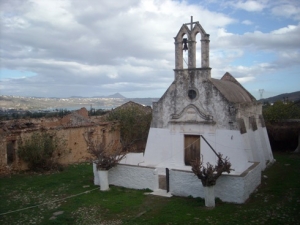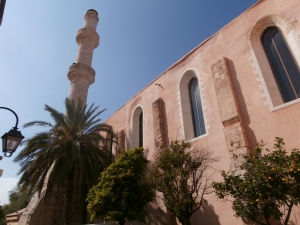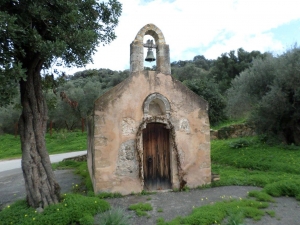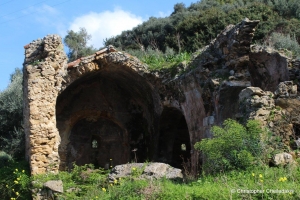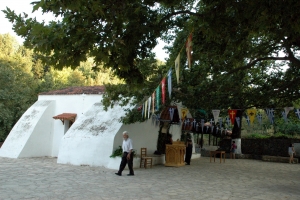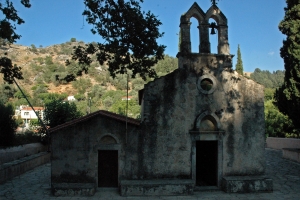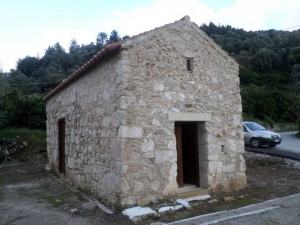The ruined monastery of St. George Mormoris is located near the village Nerokourou, by Chania and dates from 1637 (and earlier). The monastery, which once possessed a great fortune, is a dependency of Gouverneto monastery and has been declared a protected monument.
The grand Temple of the monks of the Dominican Order in Chania was built in about 1320 by the fraternity of Candia. Its architecture resembles the one of the Central Temple of Aghios Petros. The original monastery, as portrayed in old maps, images and descriptions, consisted of the temple with a high bell-tower and a two-floor arcade on the north side. The church was a basilica with a central aisle.
In the deserted village Drakiana, near the lake of Agia and in the banks of Keritis river, we meet the small Byzantine church of Saint George (Agios Georgios Methystis) bearing traces of frescoes of the Venetian Era and hosting a grave. The church celebrates on November 3, when the barrels with wine are first opened.
Very close to Perivolia province, Chania, you will find the deserted and almost unknown monastery of Saint George Harodia. The monastery was built on 12th century by a local rich lord of Chania. The monastery operated as a men’s monastery till the mid of the 20th century, when it was abandoned. Today you will still find the monk cells and the church of Saint George.
At the north exit of the gorge Therisso and near the historical Boutsounaria we meet the settlement of Garipas. Garipas, beyond the natural beauty, hosts 2 ruined Byzantine churches with frescoes. One of these is the two-aisled church of St. George and St. Nicholas located on the main road.
The church of Panagia at Therisso is located below the huge tree of the village square and next to the statue of Eleftherios Venizelos. In the area there is the tomb of the hero Stephen Chalis, a chieftain of the period 1820-1822, who was killed in battle at position Aliakes, against the Turks, on July 25, 1822.
The church of Agios Georgios is located at Therisso, Chania province. It is a double-nave church dating from 1555, with the second aisle dedicated to Saint Charalambos. The walls are adorned with very interesting frescoes.
The church of Lord Christ the Savior is a single-aisled with two arches and exquisite frescoes dedicated to the Transformation of Christ. An inscription of 1303 indicates that the painters were Theodoros Daniel and Michael Veneris. The narthex frescoes date back from the 15th century.











